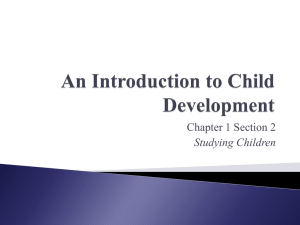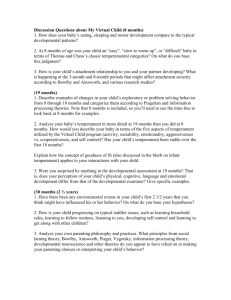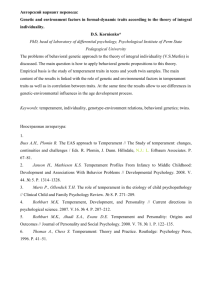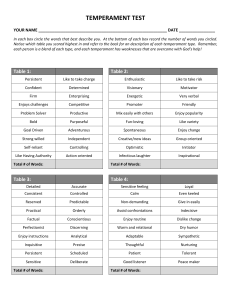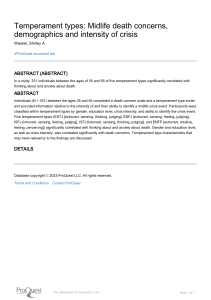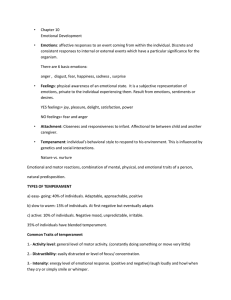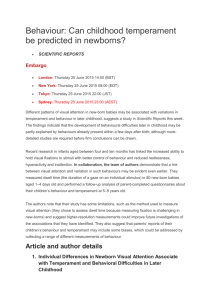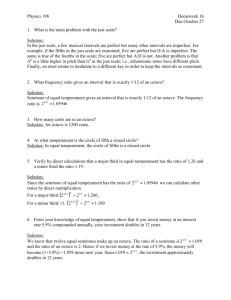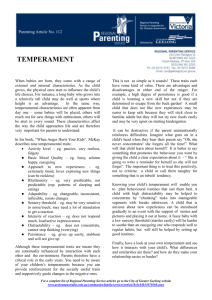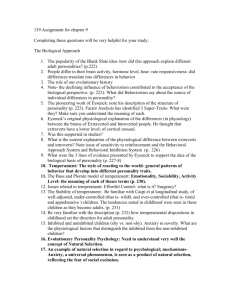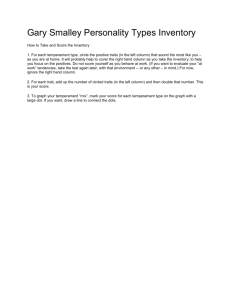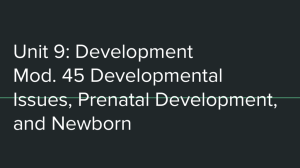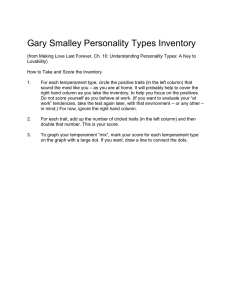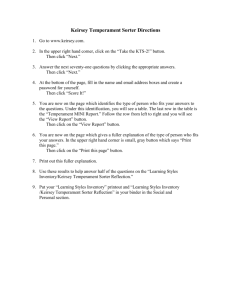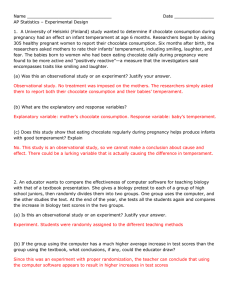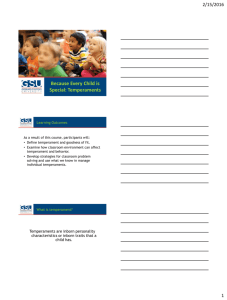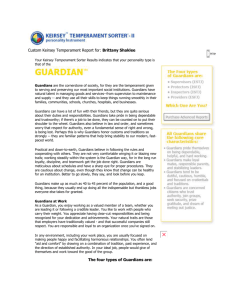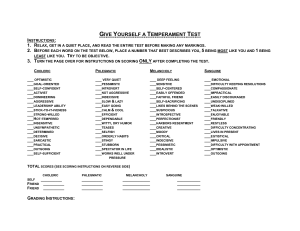TEMPERAMENT CHECKLIST
advertisement
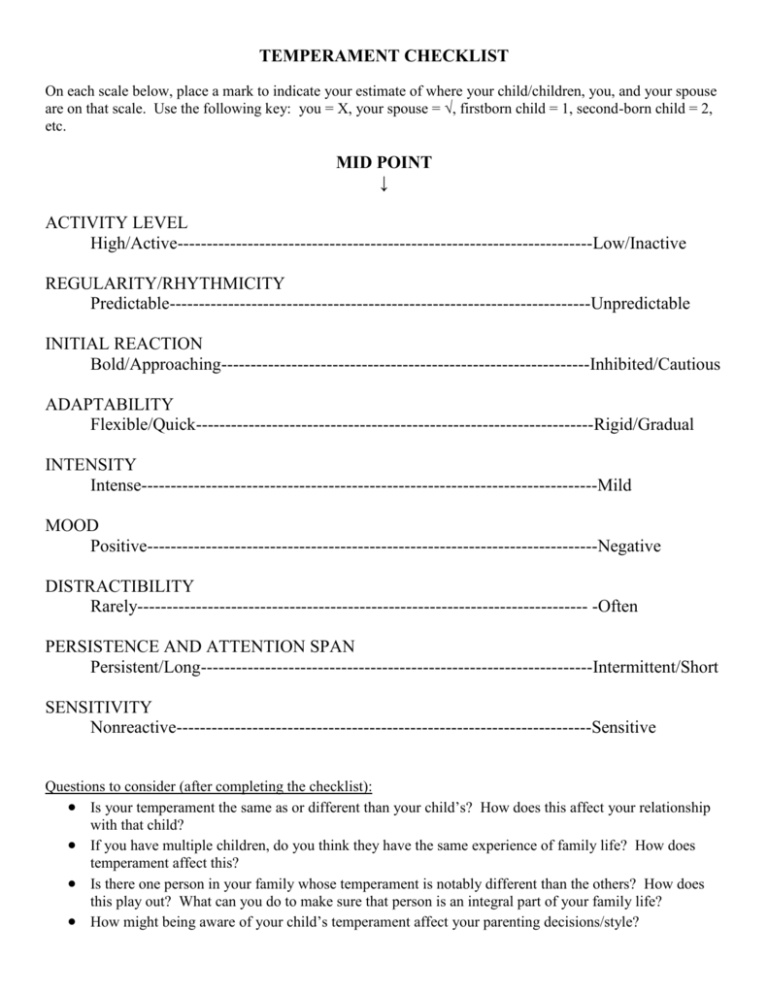
TEMPERAMENT CHECKLIST On each scale below, place a mark to indicate your estimate of where your child/children, you, and your spouse are on that scale. Use the following key: you = X, your spouse = √, firstborn child = 1, second-born child = 2, etc. MID POINT ↓ ACTIVITY LEVEL High/Active-----------------------------------------------------------------------Low/Inactive REGULARITY/RHYTHMICITY Predictable------------------------------------------------------------------------Unpredictable INITIAL REACTION Bold/Approaching---------------------------------------------------------------Inhibited/Cautious ADAPTABILITY Flexible/Quick--------------------------------------------------------------------Rigid/Gradual INTENSITY Intense------------------------------------------------------------------------------Mild MOOD Positive-----------------------------------------------------------------------------Negative DISTRACTIBILITY Rarely----------------------------------------------------------------------------- -Often PERSISTENCE AND ATTENTION SPAN Persistent/Long-------------------------------------------------------------------Intermittent/Short SENSITIVITY Nonreactive-----------------------------------------------------------------------Sensitive Questions to consider (after completing the checklist): Is your temperament the same as or different than your child’s? How does this affect your relationship with that child? If you have multiple children, do you think they have the same experience of family life? How does temperament affect this? Is there one person in your family whose temperament is notably different than the others? How does this play out? What can you do to make sure that person is an integral part of your family life? How might being aware of your child’s temperament affect your parenting decisions/style? TEMPERAMENT TRAITS The following temperament traits were first identified by Alexander Thomas and Stella Chess: Activity Level (High/Active or Low/Inactive) Physical motion during sleep, play, work, eating, and other daily activities. Regularity/Rhythmicity (Predictable or Unpredictable) Predictability of child’s response to daily events. Rhythm of bodily functions such as sleeping, eating, elimination. In school-aged children, observed as consistency, organization, and predictability. Initial Reaction (Bold/Approaching or Inhibited/Cautious) Child’s reaction to new people, places, things, foods, and routines. Adaptability (Flexible/Quick or Rigid/Gradual) Child’s long-term adjustment after initial response. Ease or difficulty with which first reaction can be changed. Intensity (Intense or Mild) Energy child puts into a response. How child responds to disappointment, praise, failure, surprise, frustration. Mood (Positive or Negative) General positive or negative mood of child. Distractibility (Rarely or Often) Child’s ability to tune out surrounding sights, sounds, or people and continue without interruption. Persistence and Attention Span (Persistent/Long or Intermittent/Short) Child’s tendency to stick with an activity despite interruptions or outside distractions. How long child sticks with an activity when there are no interruptions. Sensitivity (Nonreactive or Sensitive) Amount of stimulation required to get a response from child. Consider sight, hearing, touch, smell, and taste.
